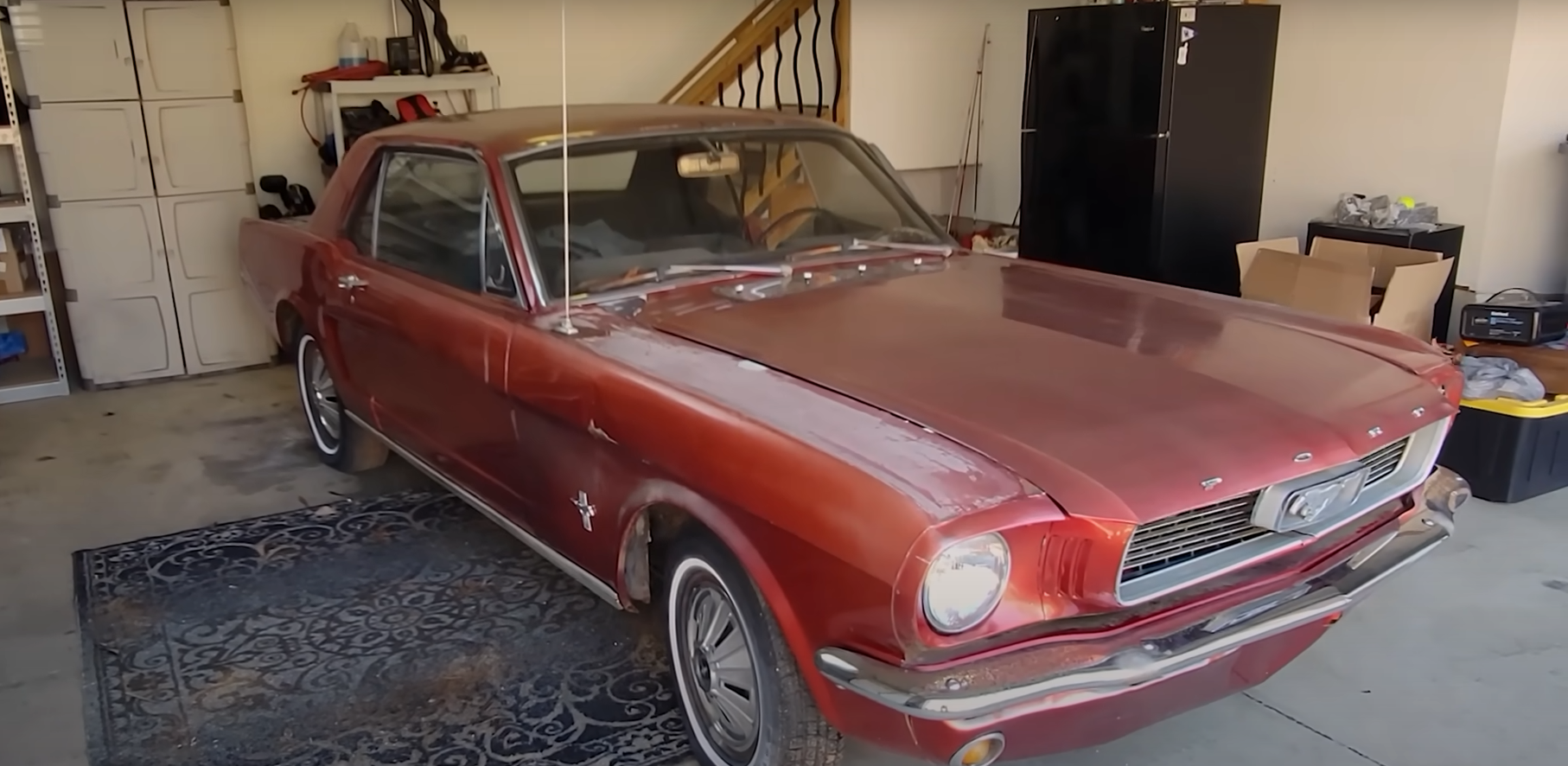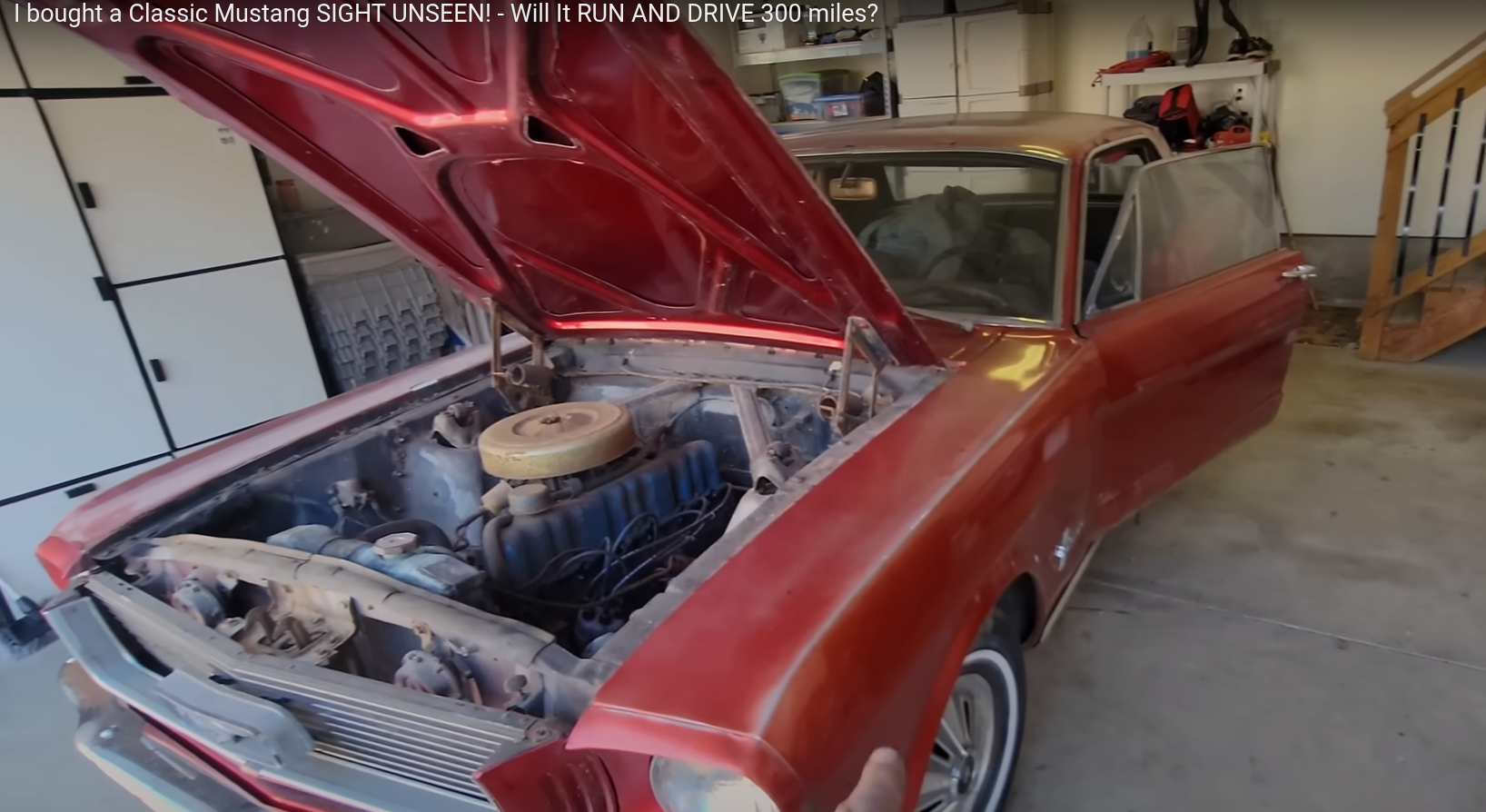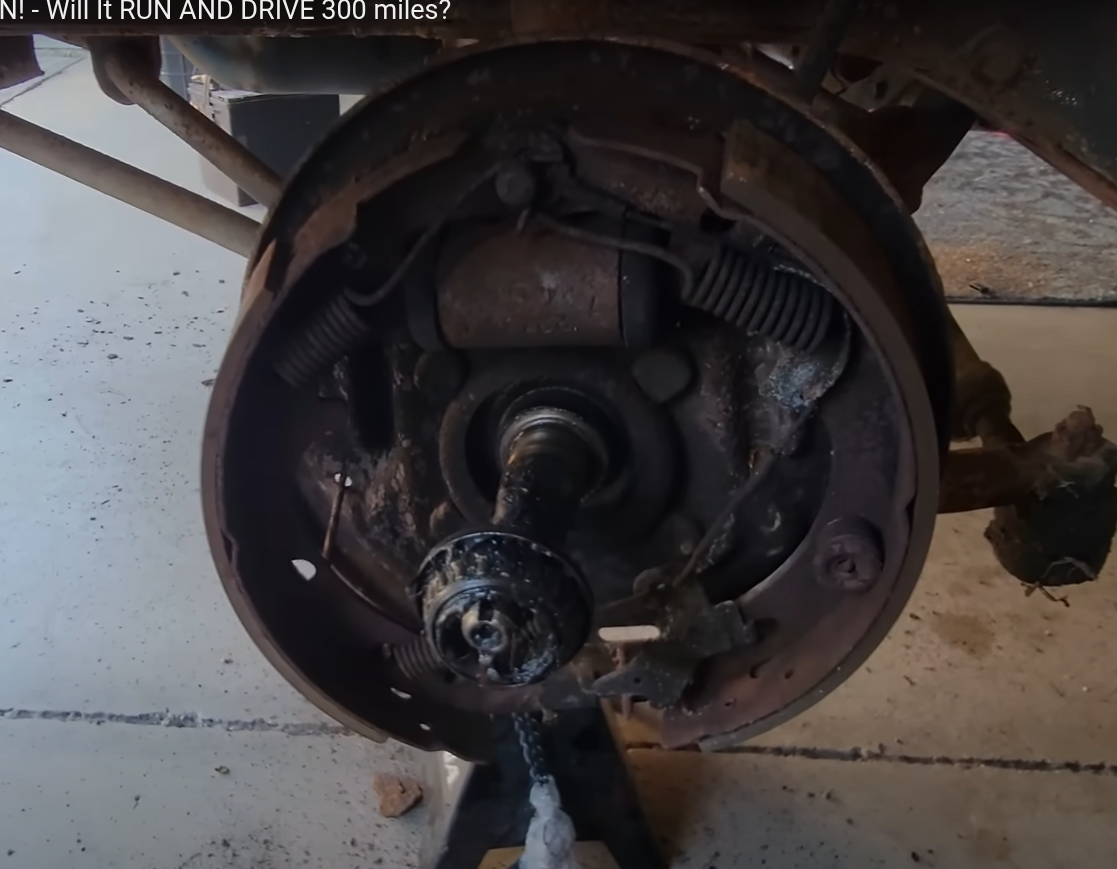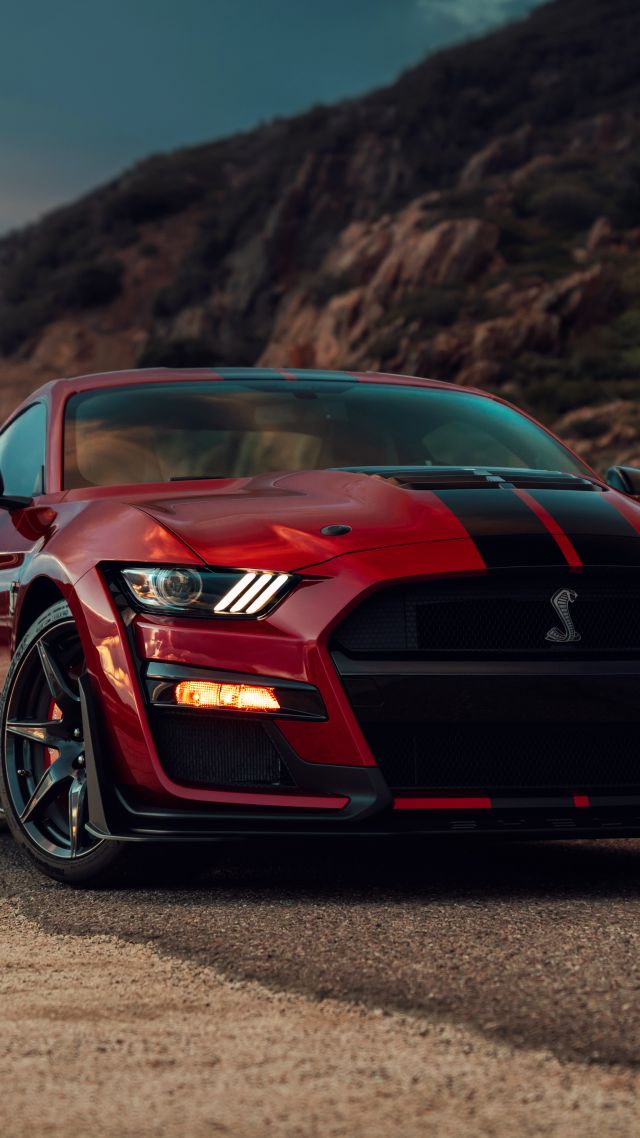Buying a classic car can come with many unknowns, especially when it has not seen the road in over a decade. This 1966 Ford Mustang spent years sitting unused before being discovered and purchased based on a few online photos. With a past shrouded in mystery and little information from previous owners, the car offers a mix of excitement and challenges for its new caretaker.
The Mustang shows signs of age with a mix of faded paint, body filler, and weathered details. Its interior tells its own story, complete with unique smells, worn seats, and quirky features. Certain mechanical issues are already clear, like a front tire that locks up and possible engine troubles. As work begins, it remains to be seen what the car might reveal during restoration.
Key Takeaways
- The vehicle’s past and condition present several uncertainties.
- Exterior and interior show age and signs of previous repairs.
- Mechanical issues and restoration challenges are expected.
Car Background
How the 1966 Mustang Was Found
The 1966 Mustang was spotted in northern Kentucky, near the Indiana border. It was purchased online after seeing only a few pictures. At the time of the sale, the car had not been running for at least ten years and had not been legally on the road for even longer. The car had been left sitting in a field, exposed to weather, which led to paint fading, flaking, and mold growth.
It was later moved to a driveway among other Mustangs owned by a collector. The car was eventually sold because it had been sitting too long untouched. The search for a ’66 model was important, as the buyer had early career experience fixing this specific year and style of Mustang.
Who Owned It Before and How It Was Bought
The person who owned the car before didn’t know much about its history. He had found it abandoned and decided to save it, as he and his family were fans of classic Fords. He placed it among his collection but never got around to restoring it. The car was then purchased sight unseen by its current owner, based only on what was visible in the online photos and the need for a restoration challenge.
Key Points:
- Found in a field and unused for over a decade
- Previous owner was a Ford enthusiast
- Bought online without in-person inspection
Factory Features and Original Condition
The 1966 Mustang likely started with a 200 cubic inch inline six-cylinder engine, which was common for that year. The car came with a four-speed manual transmission, which is a highlight for many collectors. The exterior had been painted, possibly in the late ‘80s or ‘90s, featuring silver metallic flakes over the original darker red color. Some body panels showed signs of Bondo and thick primer, and there were areas of rust.
Original Features Table:
| Feature | Description |
|---|---|
| Engine | Inline 6-cylinder (likely 200 cubic inches) |
| Transmission | Four-speed manual |
| Original Color | Deep red or burgundy (now painted with silver flakes) |
| Badges | Mustang side emblems intact |
| Wheels | Stock poverty caps on all four wheels |
| Tires | Mix of brands, dry-rotted and in need of replacing |
| Odometer | Shows 99,658.2 miles |
Inside, the Mustang has the original seating layout, a worn headliner, and a firm but musty smell. Some parts, like tail light lenses, were replaced over time. The trunk carried spare parts, a worn spare key, and miscellaneous items.
Interior Checklist:
- Original seats (heavily used)
- Four-speed gear shifter
- Odometer: 99,658.2 miles (actual mileage unclear)
- Most glass in good shape
- Various interior trim pieces still present
The vehicle retains many authentic features but will need restoration to return it to full working order.
Outside Appearance
Paint and Body Surfaces
The car has been repainted in a silver, flake-filled color that looks like it might be from the late 80s or 90s. There are areas where the paint is peeling, and some spots show thick layers of primer and body filler. Bondo is present in several places. Some body panels, like the quarters, do not have major holes, but bubbling is visible on the rockers. A previous deep red or burgundy color can be seen where the paint has peeled away.
Trim Pieces and Emblems
All major trim remains on the car. Badges on the sides are intact, but no specific engine emblems are visible. The factory grille is still in place. The rear chrome is attached, and most bumper sections are present. Bumper guards and trim pieces are stored in the trunk and appear to be in good shape. Some chrome shows minor dents or needs cleaning.
Windows and Lighting
Both the front and back windows are in good condition with no cracks present. The rubber for the front glass was removed but can be replaced. Rear light lenses are new and replace older broken ones, which are still stored in the trunk. Headlights and other glass are complete, with no obvious damage.
Evaluating Rust and Signs of Corrosion
Rust is found in certain areas. Bubbling under some trim and along the rocker panels points to hidden corrosion. Heavier filler in places may be covering up old repairs or more severe rust underneath. No major rust-through is seen on first inspection, but lower portions and trunk floors have some surface issues and need closer checking. Moisture and signs of moss on the bumpers and body panels suggest sitting outdoors for a long time.
Tires and Wheels Inspection
The car wears four matching hubcaps, sometimes called poverty caps. The tires on the car are old, dry-rotted, and not safe for driving any distance. Different tires are on hand for replacing them. The front left tire is locked up, possibly because of issues with the spindle, bearings, or brakes. The current wheels show some rust but are still presentable.
Cabin Details
Seats and Fabrics
The seats show clear signs of age, but some have held up better than others. Most of the upholstery is original, with noticeable wear and some black tape used for quick fixes. The back seat stands out as being in much better condition compared to the rest. The headliner, while full of mold, remains attached and unbroken.
Control Panel and Displays
Inside, the dashboard has a classic design, and the gauge cluster is still readable. The odometer shows 99,658.2 miles, though it is unclear if this is its first round or not. The pedals and shifter, especially with the four-speed transmission, give the interior a notable vintage feel. There is a unique old aroma that mixes with other scents from the cabin’s past.
Door Functions
The doors function but with issues. One door does not latch properly and instead uses a hook to stay closed. The windows and door panels also show their age but still work for basic needs. Some creative fixes, like extra storage made from old floor mats, add to the doors’ story.
Rear Compartment and Storage Options
The trunk is small but holds several interesting items left by previous owners, including replacement parts, bulbs, and even a couple of old bottles. There are some cracks, rust spots, and improvised air vents visible in the storage area. The trunk key is heavily worn, but it still opens with some effort, revealing a mix of original floor mats and random tools.
Mechanical Evaluation
Motor and Drivetrain Check
The car likely has a straight-six engine, which was standard for the year. It appears to be a 200 cubic inch model, based on available clues. The motor has not run in well over ten years, and the previous owner had little information about its internal state. There are no outward signs of leaks or missing major components. The engine bay is mostly complete. No obvious upgrades or modifications can be seen. The original badging confirms it is not a V8 car.
Gearbox Assessment
This vehicle features a four-speed manual transmission, which is a desirable setup for enthusiasts. There is visible wear typical for its age, but the shifter is still in place and operational. The linkage seems to connect properly, though a full check is needed to confirm smooth gear changes. The pedal set remains intact yet shows heavy use. No fluid leaks were reported near the gearbox area.
Brake Inspection
The front left wheel locks up when pushed, as shown by skid marks. This may point to an issue with the front spindle, a bearing problem, or more likely a brake fault. The car has not been on the road for many years, so all brake hardware should be viewed as suspect. The drums, lines, and master cylinder have not been replaced recently. Attention is also needed for potential corrosion in the system.
Handling and Steering Overview
The suspension appears original, as no aftermarket parts are visible. No major sag or collapse is seen on any corner. The steering system shows no obvious damage, but the car has sat for a long time, which could mean dry bushings or seized components. The tires are mismatched and heavily dry-rotted, making road handling unpredictable until replaced. Visible body roll or uneven stance is not apparent at this angle, but a proper lift assessment is still required.
Distinctive Elements and Adjustments
Changes Not Made by the Manufacturer
- The front left tire is known to lock up, likely due to an issue with the spindle, bearing, or brakes.
- The keys are heavily worn down; almost any flat piece of metal could turn the locks.
- A hook system has been added to the door to help keep it closed.
- The trunk contains various spare items, like bumper guards, arm rests, extra bulbs, Teflon tape, and random screws.
- Missing items, such as a mirror, were replaced with available parts from the trunk.
- Broken tail light lenses were replaced at some point, as evidenced by the shiny newer ones and the old broken ones found in the trunk.
Paint and Body Changes
- The car has been repainted with a silver flake or pearl finish, likely sometime between the late 1980s and late 1990s.
- There are thick layers of primer, epoxy, and Bondo visible in several places.
- Noted bubbling and peeling paint appear on the rockers and some quarter panels.
- The color was originally a darker red, possibly a deep burgundy or wine shade, now faded.
- There is visible moss and mold growth on several body parts.
- The rear quarter panel is relatively solid but still shows some weight reduction from rust and repairs.
- Speed holes and luggage vent areas are present in the trunk panel.
Non-Original Parts and Accessories
| Component | Condition or Note |
|---|---|
| Tires | Dry rotted; they are from various brands |
| Poverty caps | All four are intact |
| Front bumper | Shows signs of dings and could use restoration |
| Grille | Retains its original look with some moss present |
| Hood springs | Display functional issues |
| JC Whitney leaf guard | Installed on the front end |
| Chrome details | Still attached, showing regular wear |
| Headliner | Mold is present but it remains in place |
| Seat upholstery | Some seats are in great condition; others need tape repairs |
| Four-speed shifter | Present and fully installed |
| Back glass | Remarkably intact, no cracks |
| Spare light bulbs | Found in the trunk |
Note: Factory badges are still present, although the engine emblem for the 289 model is missing.
Issues Faced During Restoration
Parts That Should Be Swapped Out
Several pieces on this Mustang are worn or damaged beyond a simple fix. The tires are dry rotted and the left front locks up, pointing to a possible bearing, spindle, or brake problem. Some tail light lenses are broken and have already had replacements put in, but not matching the originals. Seats show heavy wear and mold covers various interior spots. The paint peels and there are spots with bubbling and filler, especially by the rockers.
List of key parts needing replacement:
- Tires (all are dry and cracked)
- Tail light lenses
- Door latch mechanisms
- Seat covers or padding (depending on damage)
- Possibly some window seals and rubber, especially where removed
Ideas for Fixing These Issues
There are a few ways to handle these problems. For the body and paint, careful sanding and matching the older dark red color could bring back its original look. Steel wool and polish might help some chrome and the bumpers, though dents will need more work. Dry rot in the tires means they must be swapped for safe driving. The door latch and lock may need to be rebuilt or replaced. Interior cleanup will take mold removal and maybe black speed tape over the worn spots on the seats.
Potential repair tactics:
- Sanding and repainting
- Swapping or rebuilding door hardware
- Cleaning or replacing affected interior pieces
- Using replacement parts from other 1966 Mustangs or reproduction suppliers
Unexpected Findings About Vehicle Condition
Some details were a surprise. The trunk key was almost just a metal stick, so weak that any flat metal could unlock it. Under the trunk mat, broken light lenses and random loose parts were discovered, but also some nearly mint pieces like an armrest. The back glass and some trim have stayed in good shape, much better than expected. A few things look factory but are actually replaced. Mold in the headliner and hidden “drifting holes” in the body turned up. The mileage on the odometer is hard to tell for sure because it might have turned over more than once.
Examples of surprise conditions:
- Nearly flawless back glass and trim
- Worn-out trunk and door keys
- Moldy but unbroken headliner
- Holes or patches in odd spots, some adding unintended “features”






